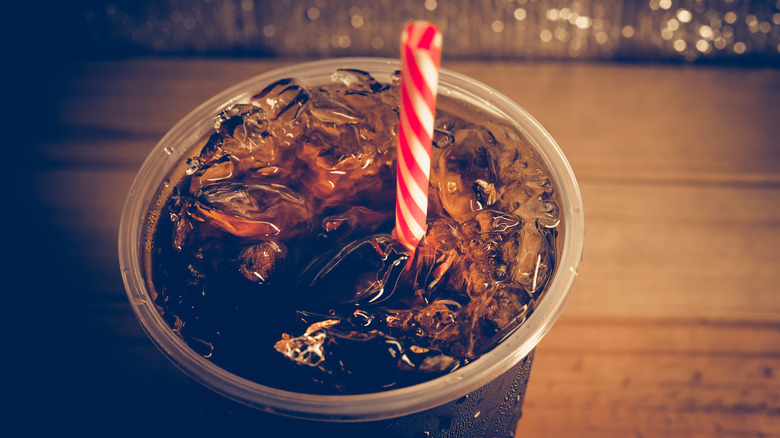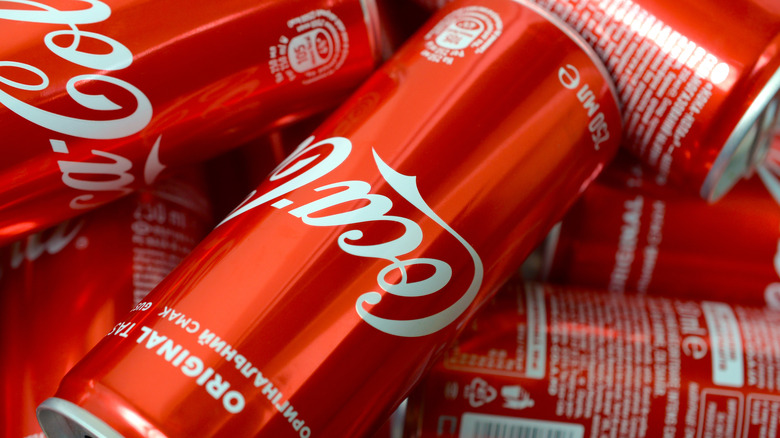Why Does Canned Soda Taste Different Than Fountain?
When it comes to sodas, everyone has strong opinions. Some prefer the flavor in cans to that in bottles — or the reverse — while others are die-hard believers in fountain drinks, even going so far as to choose chain restaurants according to which ones offer their favorite fountain sodas.
It's true that for fountain sodas, conditions and ratios of flavoring syrup to water can vary from restaurant to restaurant. McDonald's is usually held up as the gold standard (or golden standard, like their arches, if you prefer), thanks to a number of contributing factors. According to Eat This, Not That!, McDonald's pre-chills its syrups before they go into the fountain dispenser, filters all its water, and even tweaks the ratio between the two to allow for the presence of melting ice. Not only that, but, per The New York Times, McDonald's has its Coca-Cola syrup delivered in stainless steel tanks for maximum freshness ... something no other fast-food chain can claim.
But it's not just water and flavored syrup and their magic ratio (typically 5 to 1, per Carbonics) that makes fountain sodas so good. It's also the cold temperature and the level of carbonation. According to Today, the interrelation between these two things — the proper temperature and perfect carbonation — are key components in creating a great fountain soda. And did we mention straws?
The concentrated flavor of the can
So fountain sodas have a lot going for them. Simply put, they're customizable in a way that mass-produced cans never can be. But in terms of what the fundamental difference is in taste between canned and fountain sodas, that's pretty easy to pinpoint. Remember when we mentioned that melting ice that McDonald's allows for its flavoring ratio? Well, most people who drink canned sodas don't pour them over ice. This is an important distinction, as Insider notes, because "ice can dilute the soda and decrease the sweetness of the drink." The canned soda thus tends to be more concentrated in flavor, with more sweetness.
Despite their concentrated flavors, however, aluminum cans have some other issues that are often seized on by fountain drink proponents. One of these, as Today observes, is that aluminum is more porous than bottles or plastic, allowing more carbonation to escape, which makes for a flatter-drink taste. Another issue is the polymers used to coat the inside of the can. Soda producers may claim these have no impact on taste, but according to a food chemist quoted in Eat This, Not That!, it's quite possible that polymers do absorb some flavors.
So which soda tastes better, canned or fountain? That's ultimately a question of personal taste, but one thing is for sure: They do taste different, even if the recipe is the same.

